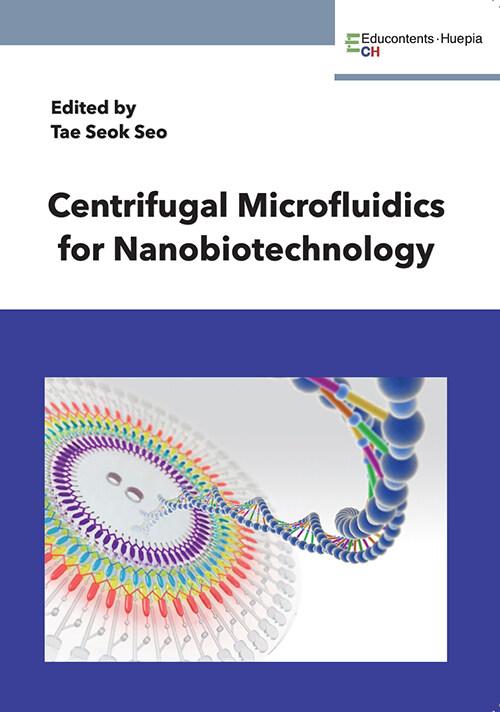책 이미지

책 정보
· 분류 : 국내도서 > 대학교재/전문서적 > 자연과학계열 > 과학일반
· ISBN : 9788963564517
· 쪽수 : 236쪽
책 소개
목차
Contents
Preface 1
Acknowledgements 3
Chapter 1. Centrifugal Microfluidic Device for Sample Pretreatment 8
1. Background 8
2. Chip Design 9
2.1. A low-throughput centrifugal microfluidic chip for sample pretreatment 10
2.2. A high-throughput centrifugal microfluidic chip for sample pretreatment 13
3. Chip fabrication 14
4. Chip operation 16
4.1. Principle of a centrifugal microfluidics 16
4.2. Operation of a low-throughput centrifugal microfluidic chip for sample pretreatment 17
4.3. Operation of a high-throughput centrifugal microfluidic chip for sample pretreatment 19
5. Performance of nucleic acid extraction 22
5.1. RNA extraction on a low-throughput centrifugal microfluidic chip 22
5.2. DNA extraction on a high-throughput centrifugal microfluidic chip 24
6. Conclusion 26
References 27
Chapter 2. Centrifugal Microfluidic Device for Polymerase Chain Reaction 30
1. Background 30
2. Centrifugal PCR chip 32
2.1. Material for a microfluidic chip 32
2.2. Chip design 33
2.3. Chip fabrication 34
3. Centrifugal PCR system 35
3.1. Rotational motor 35
3.2. Heater 36
3.3. Fluorescence detection 38
4. Chip operation 39
5. Performance of PCR on a centrifugal microdevice 40
6. Conclusion 43
References 43
Chapter 3. Centrifugal Microfluidic Device for Isothermal Amplification 45
1. Background 45
1.1. A LAMP reaction 46
1.2. An RCA reaction 46
1.3. An RPA reaction 47
2. Centrifugal chip for isothermal amplification 48
2.1. Chip design for LAMP 48
2.2. Chip design for RCA 49
2.3. Chip design for RPA 50
3. Chip fabrication process 52
4. Chip operation 55
5. Performance of isothermal amplification on a centrifugal microdevice 60
6. Conclusion 66
References 67
Chapter 4. Colorimetric Loop-mediated Isothermal Amplification Reaction on a Centrifugal Microfluidic Device 71
1. Background 71
1.1. Colorimetric assay for genetic analysis 71
1.2. Colorimetric PCR and colorimetric LAMP 72
1.3. Principle of EBT-based colorimetric detection 74
2. Centrifugal microdevice for colorimetric LAMP reactions 75
2.1. Chip design 75
2.2. Chip fabrication 78
3. Chip operation 79
4. Application for food-borne pathogen detection 83
4.1. Monoplex detection of pathogen 83
4.2. Multiplex detection of pathogen 85
4.3. Limit-of-detection test 88
5. Conclusion 90
References 90
Chapter 5. Lateral Flow Strip Assay-Incorporated Centrifugal Microfluidic Device for Genetic Analysis 93
1. Background 93
1.1. Lateral flow strip assay 93
1.2. Principle of amplicon detection on a lateral flow strip 95
2. Lateral flow assay-incorporated centrifugal microfluidic chip 97
2.1. Design of a LAMP-lateral flow strip chip 97
2.2. Design of a sample pretreatment-LAMP-lateral flow strip chip 99
2.3. Chip fabrication 100
3. Chip operation 102
4. Application of pathogen detection 104
4.1. Virus detection on a LAMP-lateral flow strip chip 105
4.2. Bacterial detection on a sample pretreatment-LAMP-lateral flow strip chip 108
5. Conclusion 111
References 112
Chapter 6. Combination of a Solution-loading Cartridge with a Centrifugal Microfluidic Device 115
1. Background 115
2. Chip design 117
2.1. Design and fabrication of a solution-loading cartridge 117
2.2. Design and fabrication of an integrated centrifugal microdevice 121
3. Development of a portable genetic analyzer 125
4. Chip operation 129
5. Application of multiplex pathogen detection 132
6. Conclusion 142
References 143
Chapter 7. Centrifugal Microfluidic Device for High-throughput Genetic Analysis 147
1. Background 147
2. Centrifugal microfluidic chip for HTP genetic analysis 148
2.1. Overall design of a centrifugal HTP microfluidic chip 148
2.2. A single unit-centrifugal microfluidics chip with multiple reaction chambers 150
2.3. A centrifugal HTP microfluidics chip with 10 units for COVID-19 diagnostics 151
2.4. A centrifugal HTP microfluidics chip with 30 units for COVID-19 diagnostics 154
3. Fabrication of a centrifugal HTP chip 155
4. Construction of a portable HTP genetic analyzer 157
5. Chip operation 159
6. Application of pathogen detection 163
6.1. A single unit-centrifugal microfluidics chip with multiple reaction chambers 163
6.2. A centrifugal HTP microfluidics chip with 10 units for COVID-19 diagnostics 164
6.3. A centrifugal HTP microfluidics chip with 30 units for COVID-19 diagnostics 166
7. Conclusion 169
References 170
Chapter 8. Centrifugal Microfluidic Device for High-throughput Enzyme-linked Immunosorbent Assay 173
1. Background 173
2. Design of a centrifugal ELISA HTP chip 175
3. Immobilization of antibody on a microfluidic device 177
4. Fabrication of a centrifugal ELISA HTP chip 178
5. Construction of a portable HTP genetic analyzer 179
6. Chip operation 181
7. Application of COVID-19 detection 183
8. Conclusion 186
References 187
Chapter 9. Centrifugal Microfluidic Device for High-throughput Nanoparticle Synthesis 189
1. Background 189
1.1. Limitations of traditional nanoparticle synthetic approaches 189
1.2. Microfluidics based nanoparticle synthesis 190
1.3. High-throughput nanoparticle synthesis on a microfluidic device 191
2. Design of a centrifugal HTP chip for nanoparticle synthesis 192
2.1. A zigzag aliquot structure for efficient and rapid solution loading 193
2.2. Regulating the release of the solution through centrifugal force 194
2.3. Design for a 30-unit centrifugal HTP chip 195
2.4. Design for a 60-unit centrifugal HTP chip 196
2.5. Design for a 60-unit centrifugal HTP chip with a serially diluting structure 197
3. Fabrication of a centrifugal HTP chip for nanoparticle synthesis 199
4. Chip operation 200
5. Application of nanoparticle synthesis 203
5.1. Quantum dots 203
5.2. Gold nanoparticles 206
5.3. Bimetallic catalysts 210
6. Conclusion 211
References 212
Chapter 10. Automatic Centrifugal Microfluidic Device 216
1. Background 216
1.1. Automation 217
1.2. Robot Arm 218
2. Design of components 219
2.1. A robotic solution pipetting device 219
2.2. A solution loading cartridge 221
2.3. Design and fabrication of a centrifugal microfluidic disc 223
3. Integration of a robotic solution pipetting device with a centrifugal chip 224
4. Construction of a portable genetic analyzer 225
5. Chip operation 227
6. Respiratory infectious virus detection from nasopharyngeal swab samples 228
7. Conclusion 232
References 233
Author 235





























